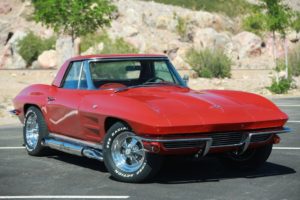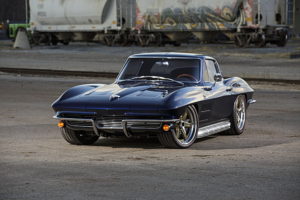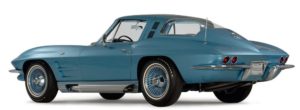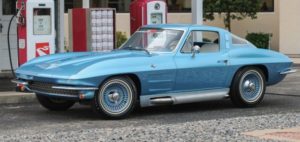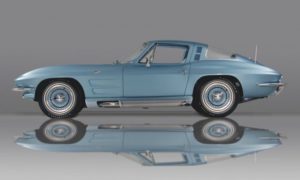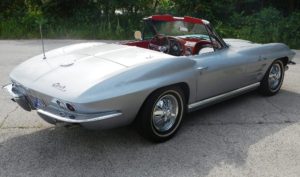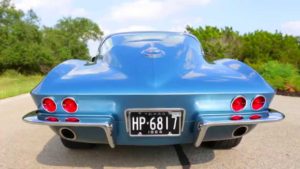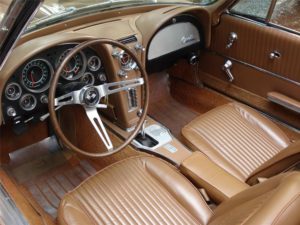The 1964 Chevy Corvette was greeted with as much enthusiasm as its 1963 counterpart had been the year before.
With the monumental success that Chevrolet had experienced after the introduction of its second-generation Corvette Sting Ray. GM executives understood that the C2‘s sophomore year would require little more than continued refinement to the already intensely popular sports car to maintain its success. There would be functional changes of course and a few minor cosmetic refinements, but for the most part, the 1964 Corvette would retain much of the ingenuity and design cues that had contributed to its initial success the previous year.
Pricing: $4252.00 (Coupe), $4037.00 (Convertible)
Engine options: 327 ci ohv V-8 (fuel injected or carbureted) – multiple-horsepower options available
Transmission: 3-speed manual (standard), 4-speed manual (optional), 2-speed Powerglide (optional)
Top speed: 130 mph
Units produced: 22,229
Available colors: Tuxedo Black, Silver Blue, Daytona Blue, Riverside Red, Saddle Tan, Ermine White, Satin Silver
Highlights of the year:
Most of the styling refinements that were made to the exterior of the 1964 model were subtle. The most notable change involved the replacement of the rear split-window that had been introduced in 1963. The split-window was abandoned completely by General Motors in 1964, replaced instead by a rear window that was constructed of a single piece of glass.
The European press had criticized the 1963 Corvette for having fairly high interior noise levels. To correct this issue, Chevrolet added more sound insulation and revised body and transmission mounts to reduce the amount of noise being generated during normal vehicle operation.
Mechanically, few real changes were made to the car. The drivetrain choices remained pretty much the same as they had in 1963
The high-performance engines, however, did receive some noteworthy upgrades. To start, the carbureted engine was improved upon with the introduction of a Holley carburetor instead of the original base engine’s Carter unit. The engine, now fed through the big four-barrel Holley carburetor duration camshaft that helped to produce 365 horsepower.
Where the 1963 Corvette had been eagerly anticipated and well-received by the press, the 1964 Sting Ray was absolutely loved by both critics and consumers alike. There were virtually no criticisms of the car at all, from any reputable critic, save for some writers making a specific complaint about the convertible’s tendency to “rattle and shake on rough roads
Despite the critics’ positive reviews, there were some minor concerns from some GM executives that the Corvette’s sales numbers might be diminished after Ford’s introduction of the Mustang in 1964. Like the original Corvette, the first Mustang came equipped standard with a six-cylinder engine, though Ford introduced an optional V8 engine from the start. What was more alarming was that the Mustang quickly found its way into a number of competitive events – including the 1964 Tour de France, where it scored a victory in its very first year. The concerns were, of course, unfounded as the Mustang was represented by Ford as a four-seat “tourer” coupe. The Corvette, by contract, had earned a solid being a true sports car. As history would eventually reveal, the two cars would never be direct competitors or even be recognized by car enthusiasts as being comparable to one another.
Ultimately, the concerns surrounding the Mustang would prove to be unfounded. The 1964 Sting Ray sold a total of 22,229 units, which set another Corvette sales record (though by less than a thousand units over the previous record set just a year earlier in 1963.) Of the units sold, only 8,304 coupes were manufactured. The remaining 13,925 convertibles proved yet again that the Corvette Roadster was still the favorite amongst Corvette consumers.
Photos of the 1964 Corvette:
Sources:
https://www.corvsport.com/1963-c2-corvette/
https://www.corvsport.com/1964-c2-corvette-image-gallery/
https://www.pinterest.ca/pin/485755509802294739/
